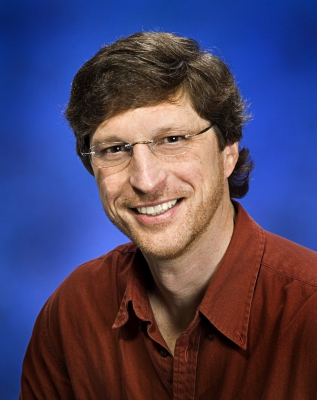Pilot Phase Begins for Routine Large-Eddy Simulations
Published: 15 May 2015

Researchers target observation and modeling together for a new level of scientific analysis on climate
When it comes to clouds, the Earth’s energy budget, and tiny aerosols, scientists don’t have all the answers. However, each atmospheric model improvement brings them a small step closer. A team of U.S. Department of Energy (DOE) scientists, led by William Gustafson of Pacific Northwest National Laboratory in collaboration with Andrew Vogelmann at Brookhaven National Laboratory and Zhijin Li at University of California, Los Angeles (UCLA), will develop a new large-eddy simulation workflow that synergistically adds value to the ARM Climate Research Facility’s observations. The combined observational and modeling elements will enable a new level of scientific analysis by connecting processes and context to observations and providing needed statistics for details that cannot yet be measured.
The Large-Eddy Simulation (LES) ARM Symbiotic Simulation and Observation, or LASSO, workflow will play a pivotal role in realizing the full potential of ARM observations to develop new process-level understanding and use that knowledge to improve climate models. This new combined approach by ARM using long-term, routine modeling to supplement observations will open many new opportunities to apply ARM’s observations. It will provide additional information that cannot be measured and that would be hard to achieve by single investigators who cannot afford to produce hundreds of high-resolution simulations.
Above and Beyond the Clouds
During the next two years, the LASSO team will focus on shallow convective clouds—the small spatial scale of these clouds compared to the bigger climate model grid spacing makes them particularly difficult to represent. The LASSO model will create a powerful new capability for furthering ARM’s mission to advance understanding of cloud, radiation, aerosol, and land-surface processes. The initial LASSO implementation will be focused on ARM’s Southern Great Plains (SGP) site.
“The tools we develop over the next two years will be used by ARM for the next decade,” said Gustafson. “We have assembled a great team to tackle this modeling challenge and we look forward to working with the community to ensure we develop the best LES infrastructure for ongoing routine simulations.”
Chosen for its representative continental weather conditions, the SGP site in Lamont, Oklahoma, is home to a wide variety of cloud types important to climate, as well as large seasonal variation in temperature, humidity, and surface fluxes. It also possesses a large network of instruments to measure weather and climate. The SGP site consists of in situ and remote-sensing instrument clusters across approximately 55,000 square miles in north-central Oklahoma that collect atmospheric and surface data around the clock.
In particular, the team will construct “data cubes” that combine observations, model output, and metrics into a unified package. By unifying the extensive observations with process-based output from the simulations, users will quickly be able to use the resulting cubes for their science applications. The design and recommendations will be formulated based on extensive testing and prioritized analyses, vetted with ARM staff and the user community, to ensure that best practices are used to obtain a result that will be of immediate use to the community.
“We’re excited to have this opportunity to join the ARM team to take this next step in combining their state-of-the-art measurements with modeling to further our understanding of important atmospheric processes,” said Andrew Vogelmann.
The LASSO model will aim for flexibility and extensibility and will seek robustness and reproducibility to ensure the model meets current and future needs, such as new observations, additional science foci and cloud types, and implementation at other ARM sites.
# # #
The ARM Climate Research Facility is a national scientific user facility funded through the U.S. Department of Energy’s Office of Science. The ARM Facility is operated by nine Department of Energy national laboratories.
The ARM Climate Research Facility is a DOE Office of Science user facility. The ARM Facility is operated by nine DOE national laboratories, including .
Keep up with the Atmospheric Observer
Updates on ARM news, events, and opportunities delivered to your inbox
ARM User Profile
ARM welcomes users from all institutions and nations. A free ARM user account is needed to access ARM data.


















